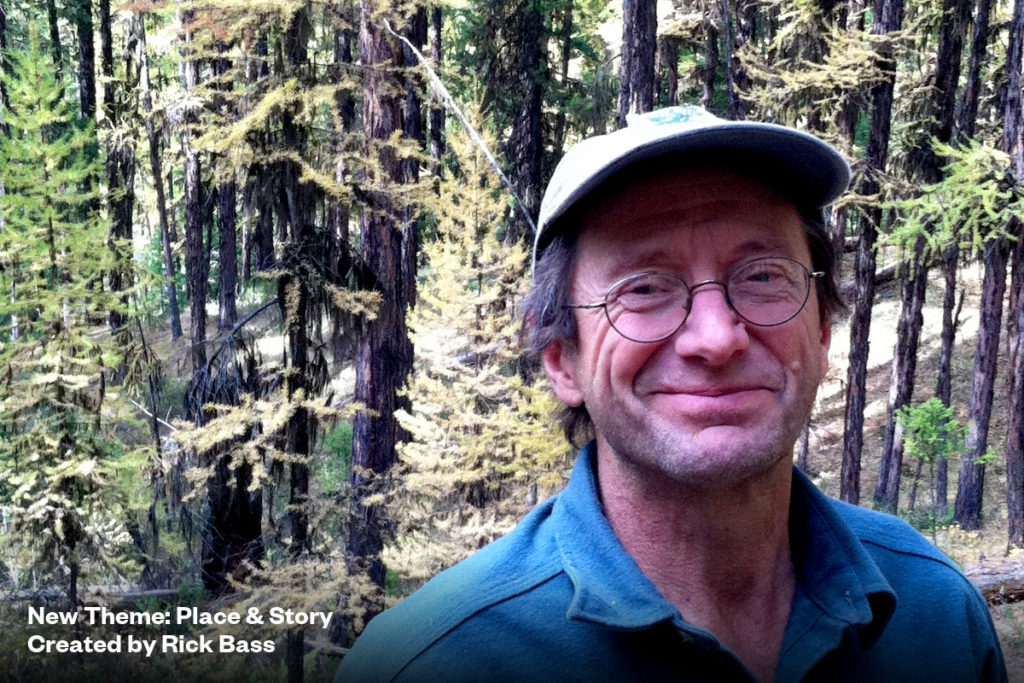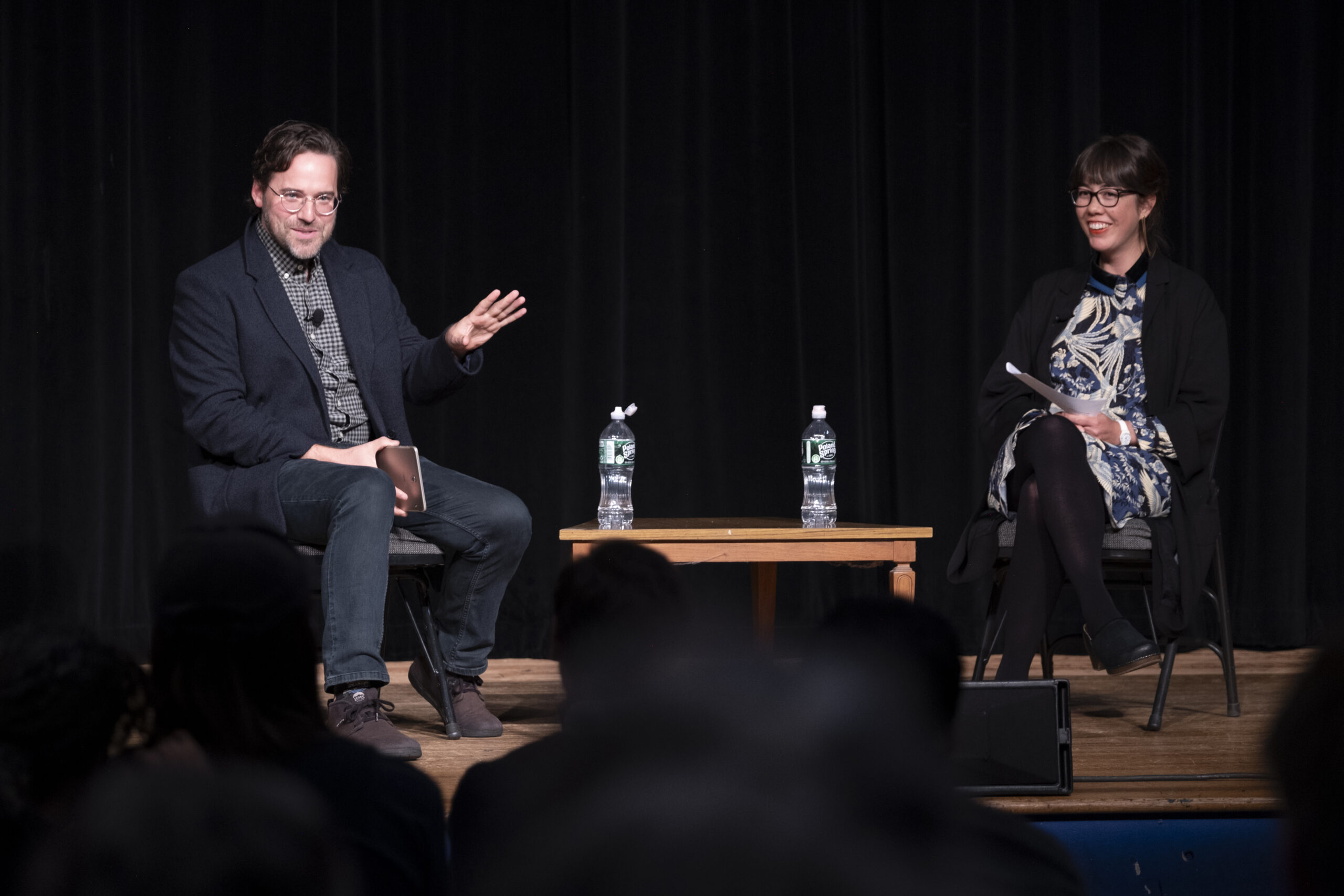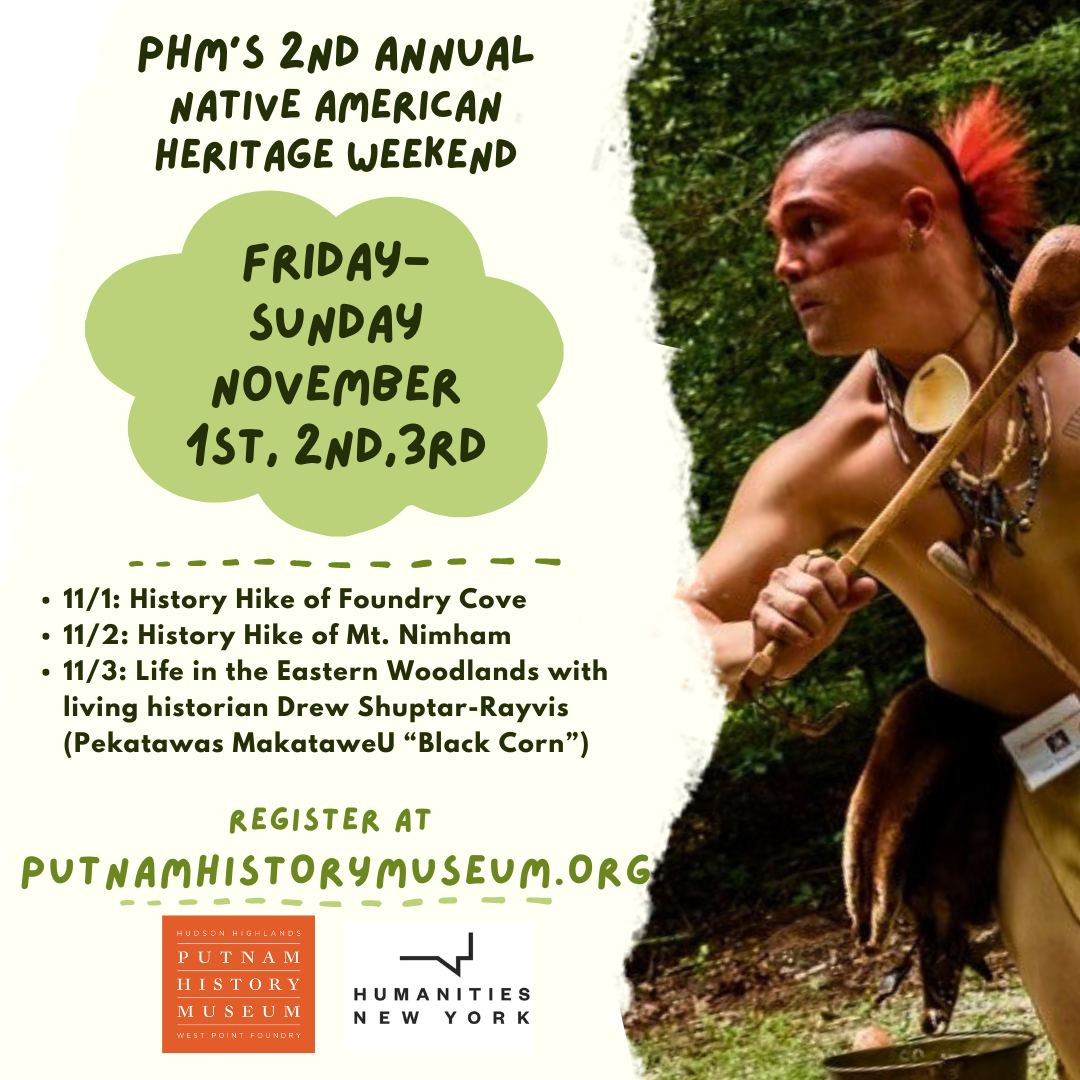By Rick Bass
We are pleased to share the introductory essay for our newest Reading & Discussion theme: “Place and Story.” Humanities New York commissioned noted novelist, essayist, and environmentalist Rick Bass to curate a selection of texts that explore the manifold ways the American landscape influences our experiences and way of life. As with all R & D groups, the texts selected–which include fiction, nonfiction, and poetry–explore the theme from a variety of perspectives. We also ask our R & D Scholar-Advisors to pen an original essay contextualizing the selected readings. Below, in the “Place and Story” essay, Rick discusses each reading in the series within the context of the American environmental myths that persist in today’s culture, whether problematic or enlightening. If you are thinking of hosting a conversation, or need some book recommendations, this essay abounds with inspiration.
At the risk of sounding like an old hippie, railing against the cultural paradigm—which is to say, The Man—I believe that stories matter more than money, and that heart’s desire can matter more than brawn. That in dreaming there does lie responsibility, to paraphrase Delmore Schwartz. I’ve selected texts—though there are so many more than these!—to remind us of the vast differences between dreams of selfishness and bounty and the duty to realize, and act upon, limits: as if there burns bright yet in the genetic templates of our species the almost always-present recognition of how tenuous our existence is. And through it all, to remember how we all belong to what the poet Mary Oliver calls “the family of things.”
It is the dream of excess, I think, which has done the most damage to the American landscape, particularly in the often-vulnerable West, where resilience can often only be measured in geological terms rather than human-years. I have no quarrel with Genesis. I find it soothing in its loving, and, to this scientist’s eyes and ears, accurate, explanation of how the world came to be. And I do not find it ironic, only bittersweet and instructive, that the same text that instructs us to be stewards in our new and briefly empowered arrival to this green earth (and even in the story of The Flood, of getting a second chance), also presents, in its evocation of Edenic bounty, the idea that there are but two original inhabitants in the story: not seven billion-plus of us, now.
One particularly damning American myth is that one can cut all the timber in a forest, or a country, and that it will grow up so fast behind the cutting that the sawyer can turn around and work his way back, ceaselessly cutting, the forest replacing itself as fast as it is cut down. This is the myth that the rain will follow the plow, and that nature bends itself to our desires and our machines and even our primitive tools. These are, among many other flawed and failing myths, myths of technology. So, as William Kittredge reminds us, stories matter, hugely. Right or wrong, true or false, we tend over time to believe them. This is both a great power and a great danger.
Bounty and excess versus scarcity and paucity. How we think of ourselves—and others—determines our destiny. These texts have been selected in the spirit of James Joyce’s admonition that literature should forge in the smithy of one’s soul the consciousness of one’s race. And yet, as we know, evolution, like history, is alive, ever rising and falling—”Descent, With Modifications,” Darwin initially called his treatise on the matter.
Wallace Stegner’s Angle of Repose is an underappreciated masterpiece, if such a thing can be said of a Pulitzer Prize-winning novel. It may well have sold a million copies across its now half-century lifespan, but because it is one of the foundational stories of our country—how we got to where we are—I feel it should be read by hundreds of millions, across generations. It will be relevant for as long as we dig and scratch at the earth for sustenance, and then dig for more than sustenance. It will also be relevant for as long as we dream, and hope; for although the book is about many things—masculinity and femininity in landscape; serving-the-self versus service to others; friendship and family—as it travels east to west, the Atlantic to the Pacific, it is perhaps most about what it states itself to be in the title: the balance between uplift and erosion, between mountain and plains; between the frenzy of ambition and the contentment of rest. A settling-out occurs with the dreams and passions of Susan and Oliver, one which it might be argued our country has not yet achieved.
How much further, one wonders, must we go, to reach that restful, tolerant condition that might be said to be a kind of wisdom?
Winter in the Blood, by James Welch, pushes the edge of loneliness and estrangement even further than does Angle of Repose. It’s a triple-braided evocation of cultural, economic, personal, and familial fragmentation, loss, diminishment, absence. This is a perfect slim book—the small, eloquent novel in its way as wondrous as the big sprawling adventure-book of a novel—with writing so spare that metaphors travel through it like birds, and as distinctive, if ever-fleeting.
Of course Virgil’s prize relic, touchstone to his family, must be a rifle, the instrument which, paired with alcohol, more than any others destroyed his birthright and ushered him into the new one, wrought with violence and dissatisfaction.
In 1989, I was fortunate enough to explore a story that was making itself, and not so much in need of a writer as instead simply an observer and a landscape to provide room for all the elements of story: structure, space and time, and, always, active characters—protagonists who want something and go after it.
The characters in The Ninemile Wolves all wanted pretty much the same thing—ecological restoration, recolonization of lost territory, recovery of lost identity—but were coming at it from decidedly different angles, and with plenty of obstacles between them and their goals.
One lone Rocky Mountain gray wolf, filtering back into the U.S. after sixty years’ absence, and then another, somehow finding her. One lone biologist, Mike Jimenez, committed to their recovery, and to the human community. The mother wolf, and her mate, chose to first return to the Ninemile Valley, to one particular meadow owned by two old cattle ranchers, Ralph and Bruce Thisted, who had the humility and curiosity, and the stewardship ethics, to not freak out when the wolf showed up in their pasture one day, green eyes blazing as it stared at their cattle. Not to give the story away, but it was the biologist’s creativity and determination, the ranchers’ tolerance and compassion, and the wolves’ ferocious fire to do more than survive–to prosper, and raise their young—that allowed this to be somewhat of a rarity in environmental sagas, one with a happy ending, or at least a happy middle.
The foundational business of life is one of the pursuit-and-gathering of calories—energy—and of territory and its resources. It’s how we treat one another that makes the journey and struggle worth the price of admission. Red-Tails in Love: A Wildlife Drama in Central Park, by Marie Winn, brings this paradigm to Central Park, a small island within a small island. The rapture, and hunger, not just of the hawks themselves, but of humans finding a single long-eared owl existing amongst pigeons in a quadrant of the park with no permanent water and very few trees, speaks to the need by all of us to glimpse, taste, know, that filaments of the rank or even feral are still alive in the world, pursuing the ancient skills by which all have arrived at this point in time.
There’s so much else I want to recommend that’s not in here. To possess an ecological awareness, wrote Aldo Leopold, is to know that we live in a world of wounds. John Graves’ Good-bye to a River, as clear-headed and bittersweet an elegy as exists yet. David Quammen’s The Song of the Dodo: Island Biogeography in an Age of Extinction, which expands on Darwin’s and Wallace’s observations about the perils of fragmentation, took me a full year to re-read, but is well worth the investment.
As Doug Peacock—whose voice, says Terry Tempest Williams, is the ethical benchmark for wilderness in the American West—reminds us, big wild country is the healthiest, and the more of it there is, the healthier it is, often still capable of holding that most iconic of American megafauna, the grizzly bear. I consider Peacock’s Grizzly Years: In Search of the American Wilderness (along with Terry Tempest Williams’ Refuge: An Unnatural History of Family and Place) to be one of the two most important works of place-based writing in the canon. I do not find it coincidental that both these books twine illness (PTSD and cancer, respectively) and grief with the restoration, even salvation, to be found in wild country not yet broken. These latter two artists are especially noteworthy in our times for their incredible commitment to activism, not merely as writers, but as front-line battlers in the daily grind of meetings, lobbying, protesting, resisting. They are active. (For more information and examples of their activist work, visit www.savetheyellowstonegrizzly and @TempestWilliams on Twitter).
A burning world elicits, from those who love it most fiercely, an impassioned, creative, and determined defense. None is more inspiring or impressive to me than Diane Wilson’s, as chronicled in An Unreasonable Woman: A True Story of Shrimpers, Politicos and Polluters, and the Fight for Seadrift, Texas. Victories can be few and far between, and hers—a one-woman wrecking ball defending her home-place of Seadrift (what a name for our times!), against a multinational corporation, with Wilson teaching herself on-the-fly everything she needed to know about courts and law–is so fantastic as to at times read like a dream.
Deep soul’s beauty in the presence of what many might call bleakness is, if sentimentality can be avoided, as it is in “Degrees of Gray in Philipsburg,” evidence of strength of character. This poem’s beauty is an earned one, and what in the hands of a lesser poet would fall prey to sentimentality is instead presented, line by line as if in cinematic frames, as a humbled existence-in-the-moment, and awareness without nostalgia. Instead, we are led to understand, between the lines, the hard-gotten realization of time’s progression, and time’s and circumstances’ shaping of those lives.
I continue to be fascinated by the manner in which place shapes things: first an individual, then the larger population, then the culture, and from that, its destiny. This is again why stories matter. In Pattiann Rogers’ wise poem, “Animals and People: ‘The Human Heart in Conflict With Itself,’” which is written, in my opinion, with just the right amount of indictment, an aggrieved lamentation that takes its power not even so much from the usual source, specificity, but instead the accruing litany, Biblical in voice—like Commandments in reverse—we are hypnotized by the incantatory style into seeing the true nature of a relationship and then, from that, through her artfulness, the transformative understanding of the why of things. There are entire books, thick books, that accomplish far less than this amazing poem.
“Circle, Montana,” by Carter Walker, is, among other things, a heart-filled contemporary examination of the way distance affects individuals—the physical distances of open space often in tension or conflict with the emotional, personal, and familial distances—and, again, affecting ultimately the cultural distances. It’s not “simply” a portrait of two cultures—Native and Anglo—in conflict, but conflict at so many other levels: affluence versus poverty, parent versus child, the fragmentation of divorce, the conflict between friendship and lovers. All these explorations are given space to roam in the expanses of eastern Montana, and yet are compressed by season—winter, of course, and a blizzard—and, again, by place, the predominant cover of darkness that is one of the northern tier’s geographic primary signatures.
The selections in this curriculum are stories of land, and of the wild current that runs through healthy land. An entire other semester could and should be given to stories of the sky, in these carbon-heated times, as the forests burn, and to stories of water, as the oceans rise and the snows and wild creeks and rivers disappear, in a plot and destiny familiar to any reader of the Book of Revelations. In this series, however, we begin at the foundation: the stone, the land, across which the water flows and the air moves and the characters in the stories of life—people, and other animals—first traveled, and still do. Some of our culture’s stories possess deep ecological as well as artistic integrity—including those listed here—while others, coming at us daily, and still others passed with toxicity across the generations, are just whack. They all matter, however, some for better and others for worse, more than ever. It is past time to deny the flawed and failing ones, and to rebuild a culture with the stories that will endure: stories which possess in their center an ecological rightness, an ecological integrity, with its ever-present and animating spirit of all that which is wild—not entirely able to be controlled or even always known, but respected, even revered. And nurtured.



